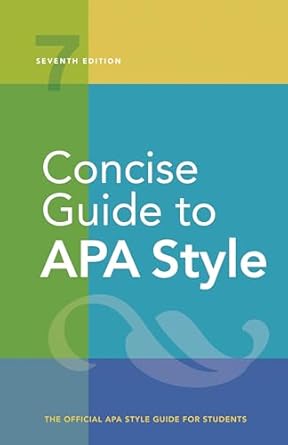[toc]
mastering lists punctuation formatting guide
Concise Guide to APA Style: 7th Edition (OFFICIAL)
Page 118 Review
Analyzing the Nuances of Lists: A Deep Dive into Punctuation and Structure
This excerpt delves into the often-overlooked intricacies of list formatting, particularly focusing on punctuation and stylistic choices.
The guidelines provided aim to ensure clarity and consistency, crucial elements for effective communication in both academic and professional contexts.
Let’s dissect the key points.
The Power of Punctuation in Bulleted Lists
The passage highlights two main approaches to punctuating bulleted lists.
The first involves omitting punctuation entirely, prioritizing brevity and visual simplicity.
As the excerpt notes, this approach is suited for short, concise phrases:
“* working doubly hard
* emphasizing one’s strengths and establishing some authority
* finding White allies (Lutz et al., 2013; Turner et al., 2011)”
This format is particularly effective when the list items are parallel in structure and function as succinct points within a larger argument.
However, the passage acknowledges that this minimalist approach may not always be appropriate.
For longer, more complex items, incorporating punctuation becomes necessary for maintaining readability and grammatical correctness.
This leads to the second option:
“The second option is to insert punctuation after the bulleted items as though the bullets were not there, following the guidelines in Sections 4.3 and 4.4 for comma and semi-colon usage; this option may be better when the items are longer or more complex.”
This emphasizes the importance of treating each bullet point as a complete (or potentially complete) sentence.
The use of commas and semi-colons follows standard grammatical conventions, ensuring that the list items flow logically and contribute to a coherent overall message.
Social Media and the Allure of Lists: A Psychological Perspective
The excerpt then shifts its focus to the role of social media in adolescent development, specifically exploring the motivations behind teenagers’ engagement with online platforms.
The bulleted list provided offers a compelling overview of these motivations:
“Adolescents may crave the opportunities for peer connection that social media affords because it allows them to
* communicate privately with individuals or publicly with a larger audience,
¢ seek affirmation by posting pictures or commentary and receiving likes or comments,
* see how their numbers of friends and followers compare with those of their peers, and
* monitor who is doing what with whom by seeing how many peers like and comment on their posts and comparing the feedback they get with what others received (Underwood & Ehrenreich, 2017).”
This list encapsulates the multifaceted nature of social media’s appeal to adolescents.
It highlights the desire for connection, validation, and social comparison, all of which are critical aspects of adolescent identity formation.
Navigating the Complexity of Combined Phrases and Sentences
The final section of the excerpt addresses the challenges of formatting lists that contain a mixture of phrases and complete sentences.
The recommended approach emphasizes consistency and clarity:
“When bulleted items contain both phrases and sentences (as with a list of definitions in a glossary), various formats are possible, but the presentation should be consistent and logical.
One approach is to lowercase the word or phrase at the beginning of the bullet in bold, followed by a colon.
If what follows the colon is a sentence fragment, lowercase the first word after the colon.”
This guidance underscores the importance of establishing a clear visual hierarchy within the list.
By using boldface and colons, the key terms are readily identifiable, while the subsequent definitions are presented in a grammatically appropriate manner.
The examples provided illustrate this principle:
“creativity: the ability to produce or develop original work, theories, techniques, or thoughts.
Use a period after a sentence fragment when an additional sentence follows the fragment; otherwise, the punctuation after the fragment is optional.
goal: the end state toward which a human or nonhuman animal is striving.
It can be identified by observing that an organism ceases or changes its behavior upon attaining this state.”
And:
“problem solving: Individuals use problem solving to attempt to overcome difficulties, achieve plans that move them from a starting situation to a desired goal, or reach conclusions through the use of higher mental functions, such as reasoning and creative thinking.”
Conclusion
In conclusion, this excerpt provides a valuable guide to navigating the nuances of list formatting.
By understanding the principles of punctuation, structure, and consistency, writers can create lists that are both visually appealing and grammatically sound, ultimately enhancing the clarity and impact of their message.
Whether crafting bullet points for a business presentation or compiling a glossary of terms for an academic paper, the guidelines outlined in this passage offer a solid foundation for effective list creation.
Buy full ebook for only $18: https://www.lulu.com/shop/american-psychological-association/concise-guide-to-apa-style-7th-edition-official/ebook/product-rmzpq54.html?page=1&pageSize=4

